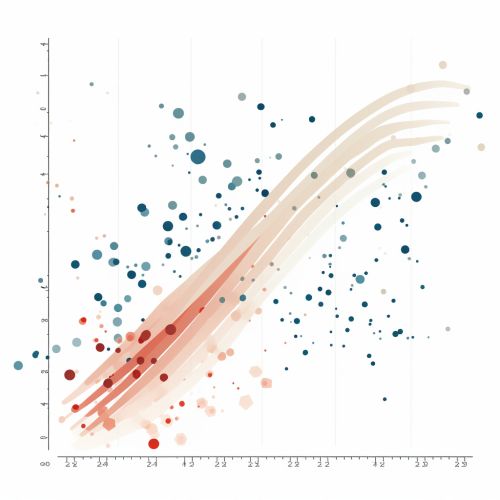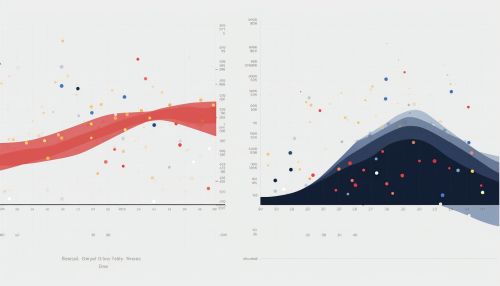Correlation
Definition and Overview
Correlation is a statistical term that describes the degree to which two variables move in relation to each other. It is a common tool in the field of statistics, used to measure the strength and direction of the linear relationship between two variables. The correlation coefficient, denoted by 'r', is a value between -1 and 1 inclusive, where 1 is total positive linear correlation, 0 is no linear correlation, and -1 is total negative linear correlation.
Types of Correlation
There are several types of correlation, including positive, negative, and zero correlation.
Positive Correlation
In a positive correlation, both variables increase or decrease at the same time. A positive correlation coefficient close to 1 indicates a strong positive correlation.
Negative Correlation
In a negative correlation, one variable increases as the other decreases. A negative correlation coefficient close to -1 indicates a strong negative correlation.
Zero Correlation
In a zero correlation, there is no relationship between the variables. A correlation coefficient of 0 indicates no correlation.
Correlation Coefficient
The correlation coefficient 'r' is a measure that determines the degree to which two variables' movements are associated. The correlation coefficient is calculated using the covariance of the two variables divided by the product of their standard deviations.


Pearson's Correlation Coefficient
Pearson's correlation coefficient, also known as Pearson's r, is a measure of the strength and direction of association that exists between two continuous variables. Pearson's correlation coefficient is a linear correlation coefficient that returns a value of between -1 and +1.
Spearman's Rank Correlation Coefficient
Spearman's rank correlation coefficient is a non-parametric measure of statistical dependence between two variables. It assesses how well the relationship between two variables can be described using a monotonic function.
Correlation and Causation
It is important to note that correlation does not imply causation. Just because two variables correlate does not mean that one causes the other to occur. They could be related indirectly through a third variable, or the correlation could be coincidental.
Applications of Correlation
Correlation is used in numerous fields, including psychology, business, medicine, and social sciences, to measure the relationship between variables. It is often used in predictive analytics to identify variables that are likely to influence future results.
Limitations of Correlation
While correlation can be useful in predicting one variable from another, it has its limitations. It only measures linear relationships and is sensitive to outliers. Furthermore, it cannot infer a causal relationship between variables.
